New commander of Kfir Brigade, biggest in
the IDF, relaxes with the troops in a sports day
By Shahar Hay
TEL AVIV (Press Release)—I
met Colonel Itai Virov at the crowded "Sportek"
building, dressed in athletic clothing rather than the
military uniform. I sat down with him, following his
participation in the Commander's Race, to speak about
the new military position he was appointed to on Aug 5th
of this year.
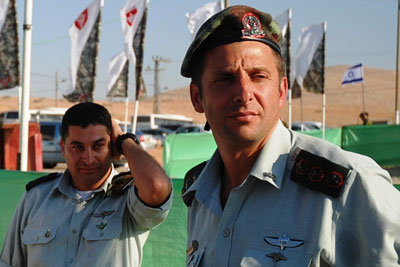 "As
I expected, the role is both challenging and fun. I
missed serving in an operational command position of
this kind." The fact that this is the biggest brigade in
the IDF poses a challenge to Virov, although he says
"the number of missions and the fight for our home" are
equally challenging. "Being a commander of any brigade
in the army, especially the Kfir Brigade is the greatest
honor and achievement anyone could ask for. I truly see
the role of commander as my personal duty and mission." "As
I expected, the role is both challenging and fun. I
missed serving in an operational command position of
this kind." The fact that this is the biggest brigade in
the IDF poses a challenge to Virov, although he says
"the number of missions and the fight for our home" are
equally challenging. "Being a commander of any brigade
in the army, especially the Kfir Brigade is the greatest
honor and achievement anyone could ask for. I truly see
the role of commander as my personal duty and mission."
Colonel
Virov has commanded a number of brigades in the past,
among them the Hirem Brigade, which operates on the
Lebanese border. Additionally, he commanded a Paratroops
reserves brigade, during combat in the Second Lebanon
War. He explained the difference between his command
positions, "This is a regular army brigade, which
builds, develops and cultivates its forces, as well as
assisting in daily operations. There is a great
difference, both and in the challenges and intense
nature of the roles; especially in the leadership and
educational fields. I feel that I have returned home,"
he says. "This epitomizes the type of service for which
I enlisted. We carry out our most important missions
throughout long, sleepless nights and the results our
worth the price."
Colonel
Itai Virov began his new command position following his
participation in the Second Lebanon War as a commander
of combat forces. "I come to this position extremely
motivated. I acquired a lot from the latest war, things
that pertain both to my position and to command
responsibilities. I learned a lot of lessons, both
personal and professional."
"Today's
sports day is a break from our routine operations in the
streets and alleyways of the territories."
This
sport's day marks the first brigade culture event which
the new commander has taken part in . The soldiers and
commanders spent the day enjoying some friendly
competition, and a much needed break from the routine.
Teams from the entire brigade join in the different
competitions, amongst them: soccer, basketball,
volleyball and rope competitions. The winning teams are
awarded a trophy as well as their fellow soldiers'
respect. "While this day is both fun and important, we
must keep in mind that physical fitness and athleticism
isn't developed in one day, but through a strict
training regimen," says Colonel Virov. "A combat
soldier's physical fitness level must be a daily
concern. This is a significant part of our high
standards of professionalism."
The
commander added, on a more personal note: "My own
physical routine includes long distance runs, four times
a week and running a marathon twice a year. I think
running not only contributes to the troop's physical
fitness but also to their mental health and capabilities
in conducting successful operations."
"Today's
sports day is a break from our routine operations in the
streets and alleyways of the territories," said the new
brigade commander. "While observing the various
competitions I can't help but think of the soldiers who
are straining themselves physically and mentally in all
operational sectors in Judea and Samaria. Our home and
our missions are there. I am filled with the hope that
in the future we will be able to stage more events like
this which will include a greater part of the brigade."
"The soldiers arrived here after a long sleepless night
arresting terrorist suspects. It's comforting to know
that there are people concerned that we get some time
off. We greatly appreciate what they have done for us,"
concluded Shaul Halfon, a combat soldier in the Levi
Battalion. "You can tell they put a lot of effort into
it."
The preceding story was
provided by the Israel Defense Force.


Please click on the above ad to
visit the Humanistic Jewish
Congregation's website
Israel Museum provides online catalogue
of Nazi-looted, unclaimed art works now
in its safekeeping
JERUSALEM (Press Release) – The Israel
Museum, Jerusalem, has completed an
online catalogue of works of art and
Judaica that were looted during the
Second World War and given to the Museum
for custodianship after the war.
Following the end of World War II, the
Jewish Restitution Successor
Organization (JRSO), charged with
reclaiming stolen Jewish property,
transferred many works of art and
Judaica to Jewish institutions in Israel
and worldwide. These objects either had
no record of prior ownership history or
came from institutions which did not
survive the war. As part of this
initiative, the Bezalel National Museum,
the Israel Museum's predecessor,
received several hundred works for
custody. These works were moved to the
Israel Museum in 1965, when the Museum
was founded.
Details on all works are now available
online, in an initiative coordinated
with the Company for Location and
Restitution of Holocaust Victims'
Assets, in order to make information
readily available to survivors and
possible heirs and to assist in their
efforts to reclaim objects formerly in
their families' possession.
The website, entitled World War II
Provenance Research Online, is part of
the Israel Museum's website,
www.imj.org.il, and includes a link to
website of the Company for Location and
Restitution of Holocaust Victims'
Assets. It is accessible worldwide and
provides information in the categories
of paintings, works on paper and objects
of Judaica. Information includes images
of all objects, titles of works or other
descriptive information, names of
artists (if known), countries of origin
(if known), dimensions and other
identifying characteristics.
Requests for restitution should be
submitted to the Israel Museum,
Jerusalem, following instructions
provided on the
website.
The website for the Company for Location
and Restitution of Holocaust Victims'
Assets is
www.hashava.org.il
The
preceding story was provided by the
Israel Museum in Jerusalem

(Return to top)
Jewish Museum in Prague celebrates the
centennial of its library; it has
136,000 volumes
PRAGUE, Czech Republic (Press
Release)—An exhibition opened earlier
this month and continuing through
October 21 in the Robert Guttmann
Gallery follows on from the Jewish
Museum in Prague’s centenary
celebrations in 2006.
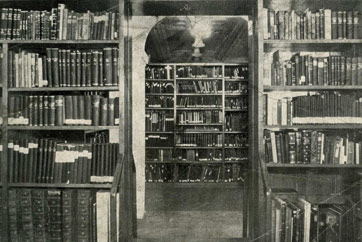 It
focuses on the 100-year history of the
museum’s library and celebrates the
important personalities who helped to
shape it – from its inception through to
its most recent projects. The curator
Michal Bušek says that “this show is the
first detailed look at the history of
the Jewish Museum in Prague’s library,
which is now a fully functional and
modern institution not only with a
comprehensive collection of Judaica and
Hebraica from Bohemia.On display for the
first time are archive records on the
library’s history, period photographs
and profiles on Tobias Jakobovits and
Otto Muneles. Visitors can also find out
about the Library of the Prague Jewish
Religious Community and the Central
Library in Terezín.” It
focuses on the 100-year history of the
museum’s library and celebrates the
important personalities who helped to
shape it – from its inception through to
its most recent projects. The curator
Michal Bušek says that “this show is the
first detailed look at the history of
the Jewish Museum in Prague’s library,
which is now a fully functional and
modern institution not only with a
comprehensive collection of Judaica and
Hebraica from Bohemia.On display for the
first time are archive records on the
library’s history, period photographs
and profiles on Tobias Jakobovits and
Otto Muneles. Visitors can also find out
about the Library of the Prague Jewish
Religious Community and the Central
Library in Terezín.”
The story of the museum’s library begins
in 1858 with the founding of the Library
of the Prague Jewish Religious
Community, which opened in 1874 under
the supervision of Nathan Grün. This now
constitutes the historic core of the
museum’s book collection. The Jewish
Museum in Prague (1906–1940) was founded
in 1906 in connection with the clearance
of the Prague ghetto, and books formed
an integral part of its collections.
Only a fragment of the library holdings
of the pre-war museum, however, have
been preserved.
During the Second World War, the Central
Jewish Museum (1942–1945) acquired about
46,000 books and sheet music from the
abolished Jewish communities, as well as
a part of the Central Library in Terezín.
Following the museum’s nationalization
during the Communist regime, the library
came under strict supervision. A
collection of forbidden books (prohibita)
had to be put together during the period
of normalisation. Fortunately for
the museum, it was able to keep this
material and to return it to the
collections after the revolution of
1989.
After the museum’s collections had been
returned to the Federation of Jewish
Religious Communities in the Czech
Republic in 1994, the library became an
independent department, new depositories
were built for it and the catalogued
book collections became fully accessible
to the public. In addition, the museum
opened a study room with a reference
library and an air-conditioned research
area for the study of old texts, as well
as a reference centre (also with a
reference library) for the general
public.
In addition to tracing the history of
the museum’s library, this exhibition
also highlights the connected fate of
key Jewish figures who shaped the form
of the library over the years. The
curator adds that “The museum’s founder,
Salomon Hugo Lieben, met the librarian
of the Prague Jewish Community, Tobias
Jakobovits in the Central Jewish Museum.
Together with M. Woskin-Nahartabi, who
later became a member of the
Talmudkommando (a group of experts
cataloguing Hebrew printed books) in
Terezín, Jakobovits catalogued items
that were shipped to the museum. The
Talmudkommando was led by Lieben’s
former colleague from the Prague Burial
Society, Otto Muneles, who later became
the head of the library section in the
post-war Jewish Museum in Prague.”
The Library of the Jewish Museum in
Prague, which now contains as many as
135,000 volumes, is a place where the
past encounters the present and where
the works of those who died long ago
remain alive. This exhibition presents
the library as an institution that seeks
to be a place where the tradition,
wisdom and knowledge of past generations
are encountered in a lively dialogue
with the readers and researchers of the
present.
The preceding story was provided by the
Jewish Museum of Prague
.
Holocaust
Memorial
Museum
receives
millions of
records,
awaits
action by
France,
Italy and
Greece
WASHINGTON,
DC — The
United
States
Holocaust
Memorial
Museum this
month
received the
first
shipment of
archival
materials
from the
International
Tracing
Service
(ITS)
archive in
Bad Arolsen,
Germany.
Digital
copies of
the
approximately
13.5 million
pages of
deportation
files,
arrest
records, and
ghetto and
concentration
camp
documentation
were
delivered to
the Museum
by Reto
Meister,
Director of
the
International
Tracing
Service
(ITS). It is
the first of
several
scheduled
transfers of
records that
will
eventually
total over
50 million
digital
images of
archival
material.
Once
completed,
the ITS
collection
will double
the number
of pages in
the Museum's
archival
holdings.
"This first
transfer is
the
beginning of
a major
undertaking,"
says Museum
Director
Sara J.
Bloomfield.
"Our goal is
to help
survivors,
and the
archive
cannot be
made
available to
the public
until all
eleven ITS
nations have
completed
their
ratification
procedures.
France,
Italy and
Greece must
do this
urgently."
The Museum
pressed hard
for the
transfer to
take place
in advance
of the final
ratification
to begin the
complex
process of
preparing
the archive
to be
searched.
That way,
when the
archive is
officially
opened, the
Museum will
be able to
respond
quickly to
Holocaust
survivors
who have
waited far
too long for
this
information.
At that
time,
survivors
will be
welcome to
access the
collection
in the
Museum's
archives,
but no
survivor
will have to
travel to
Washington,
D.C. to
obtain
information
about
themselves
or loved
ones.
Survivors
will be able
to submit
requests for
information
by postal
mail,
e-mail, fax,
or via the
Internet and
will be
provided
copies of
documentation
pertaining
to their
request at
no cost.
The Museum
led the
years-long
effort to
make the
documentation
at ITS,
which was
created
after the
war as a
tracing
service and
yet has
remained
closed to
the public,
accessible
to survivors
and others.
The archive
is governed
by an
11-nation
board;
unanimous
consent is
required to
open its
contents.
While the
documents
cannot yet
be accessed,
the Museum
and the ITS
are
preparing an
inventory of
the
archive's
collections
that will be
available on
the Museum's
Web site at
www.ushmm.org/its
and ITS Web
site at
www.its-arolsen.org.
Under the
agreement,
each of the
11 nations
may receive
a copy of
the archive.
Two other
nations have
designated
their
national
repositories.
Yad Vashem
will be the
recipient of
Israel's
copy, and
the
Institute of
National
Remembrance
in Warsaw
will receive
Poland's
copy.
The arrival
of the first
part of the
material
permits the
Museum to
begin the
process of
making the
documentation
searchable.
Currently,
only a small
fraction of
the massive
amount of
material is
indexed for
computer
searching.
With the
data in
Museum
possession,
technical
experts can
begin
developing
software to
search the
collection.
To further
prepare for
the
archive's
opening,
several
Museum
researchers
have
recently
completed
two weeks of
on-site
training at
Bad Arolsen.
Future
transfers
will include
the ITS
Central Name
Index, which
is scheduled
for delivery
in the fall.
Millions of
pages of
forced and
slave labor
records are
expected to
arrive early
next year.
Displaced
persons camp
and
resettlement
records are
scheduled
for delivery
in late 2008
or early
2009.
Survivors
and others
can obtain
more
information
on the ITS
archive at
the Museum's
Web site,
www.ushmm.org/its
or call by
calling the
Museum
toll-free at
866-912-4385.
A living
memorial to
the
Holocaust,
the United
States
Holocaust
Memorial
Museum
inspires
leaders and
citizens to
confront
hatred,
prevent
genocide,
promote
human
dignity and
strengthen
democracy.
Federal
support
guarantees
the Museum's
permanence,
and donors
nationwide
make
possible its
educational
activities
and global
outreach.
For more
information,
visit
www.ushmm.org.
The
preceding
story was
provided by
the
Holocaust
Memorial
Museum
(Return to
top)
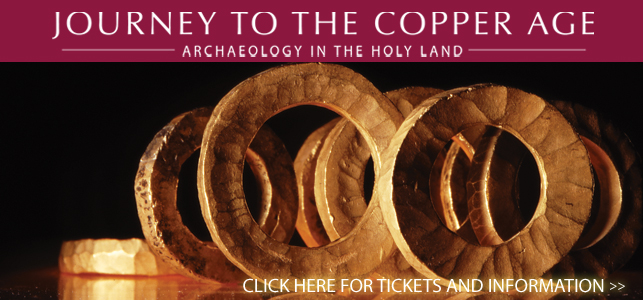
Spertus
Institute
hires new
CFO as
November 30
opening for
its new
museum
building
approaches
CHICAGO
(Press
Release)—
Spertus
Institute of
Jewish
Studies has
announce the
hiring of
Beata E.
Swacha, CPA,
as the
Institute’s
new Chief
Financial
Officer
(CFO),
effective
immediately.
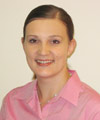 As
Spertus
Institute’s
Chief
Financial
Officer,
Swacha will
be
responsible
for overall
financial
strategy, as
well as
accounting
and budget
preparation,
for the
nationally
renowned,
Chicago-based
Jewish
educational
and cultural
institution.
She
previously
served as
the Audit
Manager for
McGladrey
and Pullen,
LLC.
(formerly
Alschuler,
Melvoin and
Glasser LLP)
where she
developed a
specialty in
financial
management
for
academic,
cultural,
and other
nonprofit
organizations
and
foundations.
Swacha
received a
Master of
Accountancy
from DePaul
University,
from which
she
graduated
with
distinction,
and a
Bachelor of
Business
Administration
in
Accountancy
from Loyola
University,
from which
she
graduated
Summa Cum
Laude. She
is a member
of the
American
Institute of
Certified
Public
Accountants
and the
Illinois CPA
Society.
Swacha is
married with
two young
sons and
resides in
suburban
Roselle. As
Spertus
Institute’s
Chief
Financial
Officer,
Swacha will
be
responsible
for overall
financial
strategy, as
well as
accounting
and budget
preparation,
for the
nationally
renowned,
Chicago-based
Jewish
educational
and cultural
institution.
She
previously
served as
the Audit
Manager for
McGladrey
and Pullen,
LLC.
(formerly
Alschuler,
Melvoin and
Glasser LLP)
where she
developed a
specialty in
financial
management
for
academic,
cultural,
and other
nonprofit
organizations
and
foundations.
Swacha
received a
Master of
Accountancy
from DePaul
University,
from which
she
graduated
with
distinction,
and a
Bachelor of
Business
Administration
in
Accountancy
from Loyola
University,
from which
she
graduated
Summa Cum
Laude. She
is a member
of the
American
Institute of
Certified
Public
Accountants
and the
Illinois CPA
Society.
Swacha is
married with
two young
sons and
resides in
suburban
Roselle.
Swacha
replaces
Marvin S.
Cutler, CPA,
who retired
as Spertus
CFO after
serving in
this
position
since 1994.
Cutler
continues to
serve as an
Adjunct
Professor at
Spertus,
teaching
Budgeting
and Finance
in Spertus
College’s
Master of
Science in
Nonprofit
Management
Program. In
addition to
his
impressive
commitment
to Spertus,
Cutler has
also been
active in
the local
nonprofit
community,
particularly
through his
involvement
with
Illinois
CPAs for the
Public
Interest.
Swacha joins
the Spertus
staff as the
Institute
prepares to
open its new
facility,
currently
under
construction
just north
of the
present
Spertus
location.
Designed by
the
award-winning,
Chicago-based
firm of
Krueck &
Sexton
Architects,
the new
facility
(610 S.
Michigan
Avenue) will
allow
Spertus to
better serve
its longtime
students and
visitors,
and to meet
the needs of
new
audiences
with
expanded
programming.
The building
will contain
enhanced
gallery,
classroom,
and library
space for
Spertus
Museum,
Spertus
College, and
the Asher
Library, as
well as a
state-of-the-art
theater for
live
performance
and film,
space for
community
events and
celebrations,
a Children’s
Center
designed
with Redmoon
Theater
Artistic
Director Jim
Lasko and
Odile
Compagnon,
an expanded
gift shop,
and the
kosher
Spertus Café
by Wolfgang
Puck. It is
scheduled to
open to the
public
November 30,
2007.
(Return
to top)
. {Click
the above ad for more
information
{Click
the above ad for more
information}
.
. . .
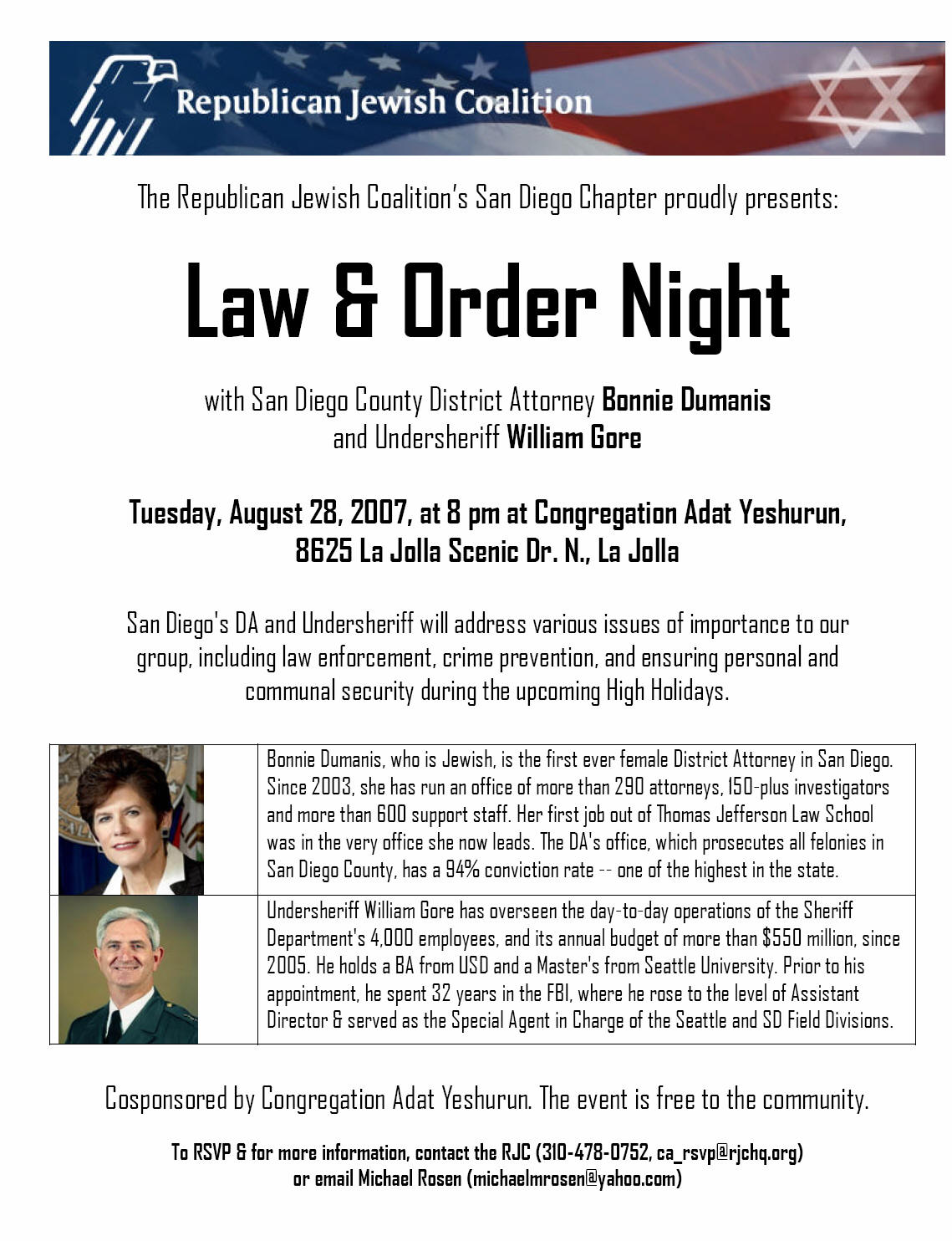
  AROUND
THE TOWN —Liberal
activists are concerned over reports that KLSD Radio is
switching from the center to left "Air America" format
to something less controversial and more profitable in
conservative San Diego. Larry Gorfine,
a Democratic party stalwart, is among those pushing an
internet petition urging the radio station to fight on,
and not switch. Here is
a link. AROUND
THE TOWN —Liberal
activists are concerned over reports that KLSD Radio is
switching from the center to left "Air America" format
to something less controversial and more profitable in
conservative San Diego. Larry Gorfine,
a Democratic party stalwart, is among those pushing an
internet petition urging the radio station to fight on,
and not switch. Here is
a link.
CAMPUS
WHIRL—The
students are returning to campus and the Jewish Student
Union and Hillel are ready. Tomorrow on the San
Diego State University campus, Hannah Berman, a
Lipinsky JCSC campus fellow will be passing out free
bagels on the lawn above Scripps Cottage from 11:30 a.m.
to 1:30 p.m. The following day Hillel will have a
table set up at the Student Union, and on Wednesday the
organization will host a hot dog and veggie burger
barbecue.
COMMUNITY WATCH—The
Jewish American Chamber of Commerce in San Diego wants
to help young entrepreneurs start up their businesses.
It is seeking senior business persons with know how to
serve as advisors on its new
Foundation.
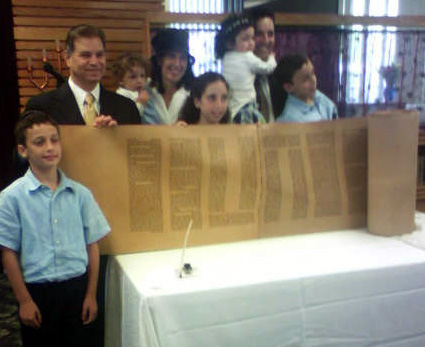 |
CONGREGATIONAL CURRENTS—We thank Yehuda Lave for the photos of the Torah dedication by the Nissanoff family (left, with sofer Alberto Attia) at Chabad of University City. At right, Attia finishes up the Torah as the congregation watches. |
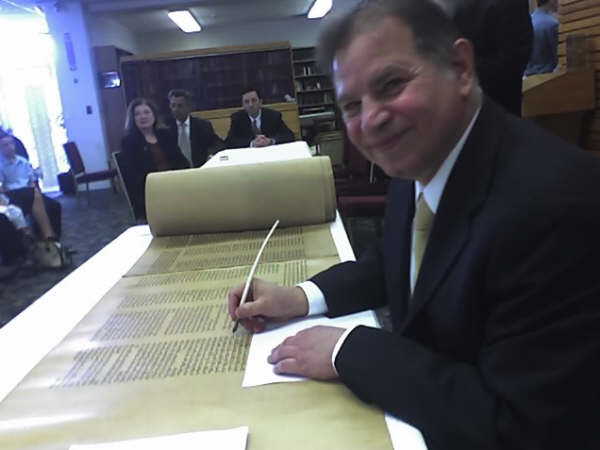 |
CYBER-REFERRALS—We thank contributors who pass along or post stories of interest for your benefit:
●Hillel Mazanksy passes along an op-ed piece by
Hillel C. Neuer of the U.N. Watch that appeared
in the
Boston
Globe.
It talks
about the deeply ingrained anti-Semitism as the United
Nations. Here is
a link. He also found an online spoof of
Google called "Jewgle." Nu, take
a look.
●The U.S. Center for Disease Control and
Prevention notes a new exhibit at its
headquarters in Atlanta in which Brazilian
photojournalist
Sebastiăo Salgado
tells
the history of the worldwide fight against polio,
including the development of vaccines by Drs. Jonas
Salk and Albert Sabin, and through his
lens examines efforts around the globe to eradicate the
disease. Some of his photos are previewed online.
Here is the link.
JEWISH POLITICAL FIGURES—Elected officials from the Jewish community find themselves dealing with a great variety of issues. We'll post you on some of their wide ranging activities in this section of this column.
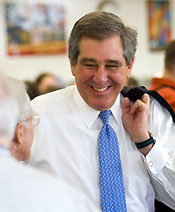 ●Louisville
Mayor
Jerry Abramson
has announced a 30-block redevelopment project in
concert with the University of Louisville and the State
of Kentucky. Expected to cost $2.5 billion over
the next two decades, the redevelopment is expected to
generate high skilled, high paying jobs in the health
care sector. ●Louisville
Mayor
Jerry Abramson
has announced a 30-block redevelopment project in
concert with the University of Louisville and the State
of Kentucky. Expected to cost $2.5 billion over
the next two decades, the redevelopment is expected to
generate high skilled, high paying jobs in the health
care sector.
 ●New
York City Mayor
Michael Bloomberg
has broken ground on an
$8.7 million
Phase II renovation of the Harlem River Park Greenway
and Esplanade. Acording to the mayor's office: "This
project, expected to be completed in August 2008, will
open a new portion of the waterfront to the public, and
extend the existing greenway and esplanade north from
139th Street to 142nd Street. Phase I, completed in
2003, opened a section of waterfront and established a
greenway and esplanade from 135th Street to 139th
Street. When this section is completed, New Yorkers will
be able to travel on the waterfront from 60th Street to
142nd Street, with a ten-block detour that uses existing
bike lanes to avoid a section of waterfront that is
being used for necessary bridge repairs." ●New
York City Mayor
Michael Bloomberg
has broken ground on an
$8.7 million
Phase II renovation of the Harlem River Park Greenway
and Esplanade. Acording to the mayor's office: "This
project, expected to be completed in August 2008, will
open a new portion of the waterfront to the public, and
extend the existing greenway and esplanade north from
139th Street to 142nd Street. Phase I, completed in
2003, opened a section of waterfront and established a
greenway and esplanade from 135th Street to 139th
Street. When this section is completed, New Yorkers will
be able to travel on the waterfront from 60th Street to
142nd Street, with a ten-block detour that uses existing
bike lanes to avoid a section of waterfront that is
being used for necessary bridge repairs."
 ●U.S.
Rep. Barney Frank
(Democrat, Massachusetts) has set September 5 for a
hearing by the House Financial Services Committee, which
he chairs, into "the current crises in the credit
markets, mortgage market and the implications for the
U.S. consumer and the economy." Witnesses from the
Federal Reserve and the Department of Treasury will
provide testimony. ●U.S.
Rep. Barney Frank
(Democrat, Massachusetts) has set September 5 for a
hearing by the House Financial Services Committee, which
he chairs, into "the current crises in the credit
markets, mortgage market and the implications for the
U.S. consumer and the economy." Witnesses from the
Federal Reserve and the Department of Treasury will
provide testimony.
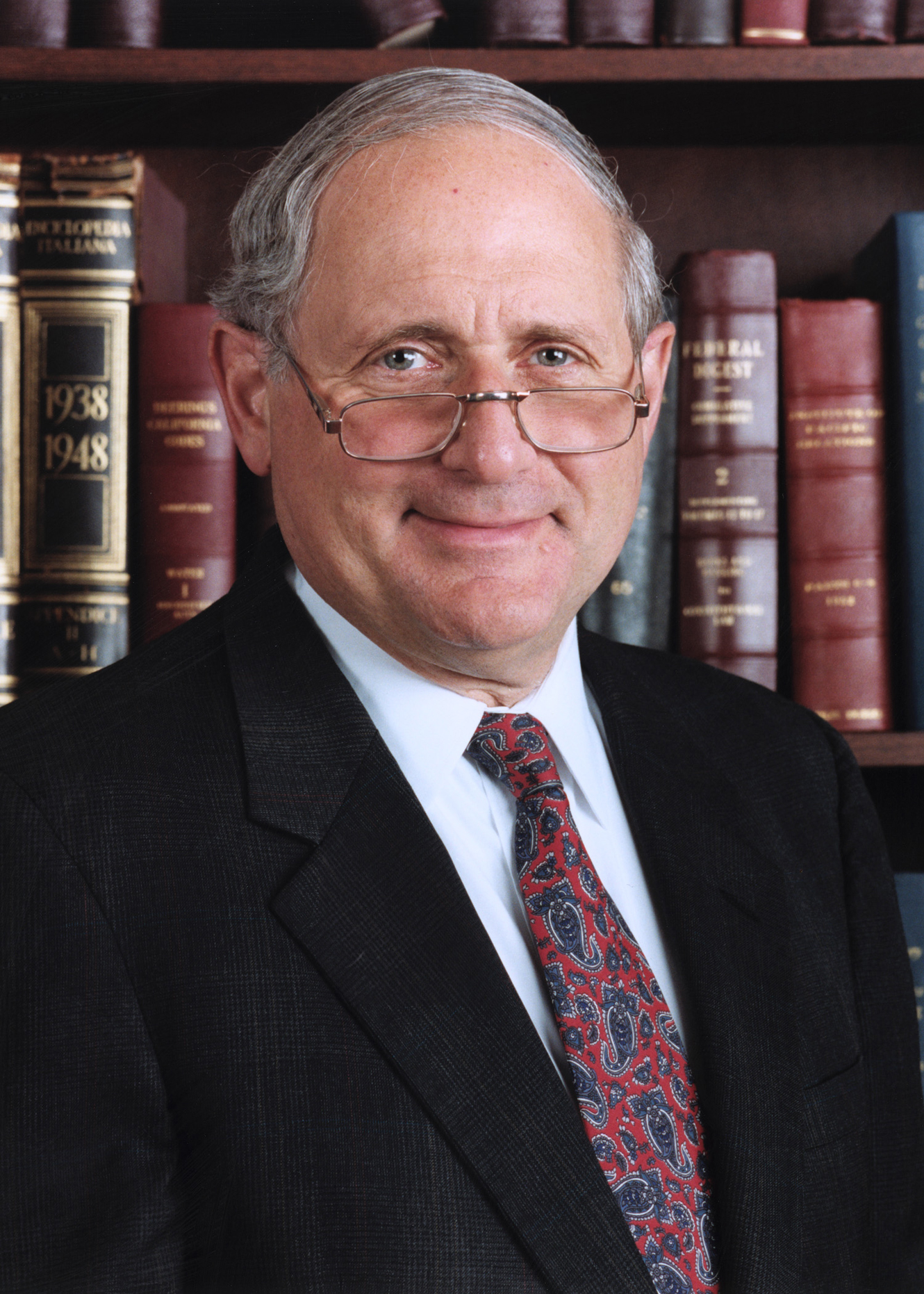  ●
Announcing the reshuffling of subcommittee assignments
for the Senate Armed Services Committee earlier this
month, the chairman, Senator Carl Levin
(Democrat, Michigan), assigned Senator Joseph
Lieberman (Independent, Connecticut) as ●
Announcing the reshuffling of subcommittee assignments
for the Senate Armed Services Committee earlier this
month, the chairman, Senator Carl Levin
(Democrat, Michigan), assigned Senator Joseph
Lieberman (Independent, Connecticut) as
Levin and Lieberman
chairman of the Airland subcommittee, and also named him
as a member of the subcommittees on seapower and
personnel.
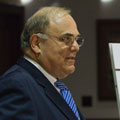 ●Pennsylvania
Gov. Edward Rendell recently held a signing
ceremony for a bill expanding his state's commitment to
solar energy at a school in Erie, Pennsylvania, where a
new solar system is being installed. "By
increasing our use of clean and renewable energy
technologies, we are growing Pennsylvania’s economy,
protecting our environment and strengthening our
national security,” he said. ●Pennsylvania
Gov. Edward Rendell recently held a signing
ceremony for a bill expanding his state's commitment to
solar energy at a school in Erie, Pennsylvania, where a
new solar system is being installed. "By
increasing our use of clean and renewable energy
technologies, we are growing Pennsylvania’s economy,
protecting our environment and strengthening our
national security,” he said.
 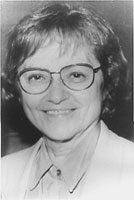 ●
New York Governor Eliot Spitzer recently
signed legislation enabling rape victims to obtain quick
information about whether the assailant tested positive
for HIV/AIDS. Previously victims could only ●
New York Governor Eliot Spitzer recently
signed legislation enabling rape victims to obtain quick
information about whether the assailant tested positive
for HIV/AIDS. Previously victims could only
Spitzer, Mayersohn
request such information. The legislation was
authored by Assemblywoman Nettie Mayersohn.
SIMCHAS—Gerry Greber,
a retired General Foods chemist now living in Carlsbad, was joined by friends and family at the Lomas Santa Fe Country Club today to celebrate his 80th birthday. The invitation that his wife Marilyn sent out for the event featured a photo of Gerry, approximately age 2, in a somewhat formal pose. We'll leave it to our readers to decide whether he has changed very much in the ensuing years/
|
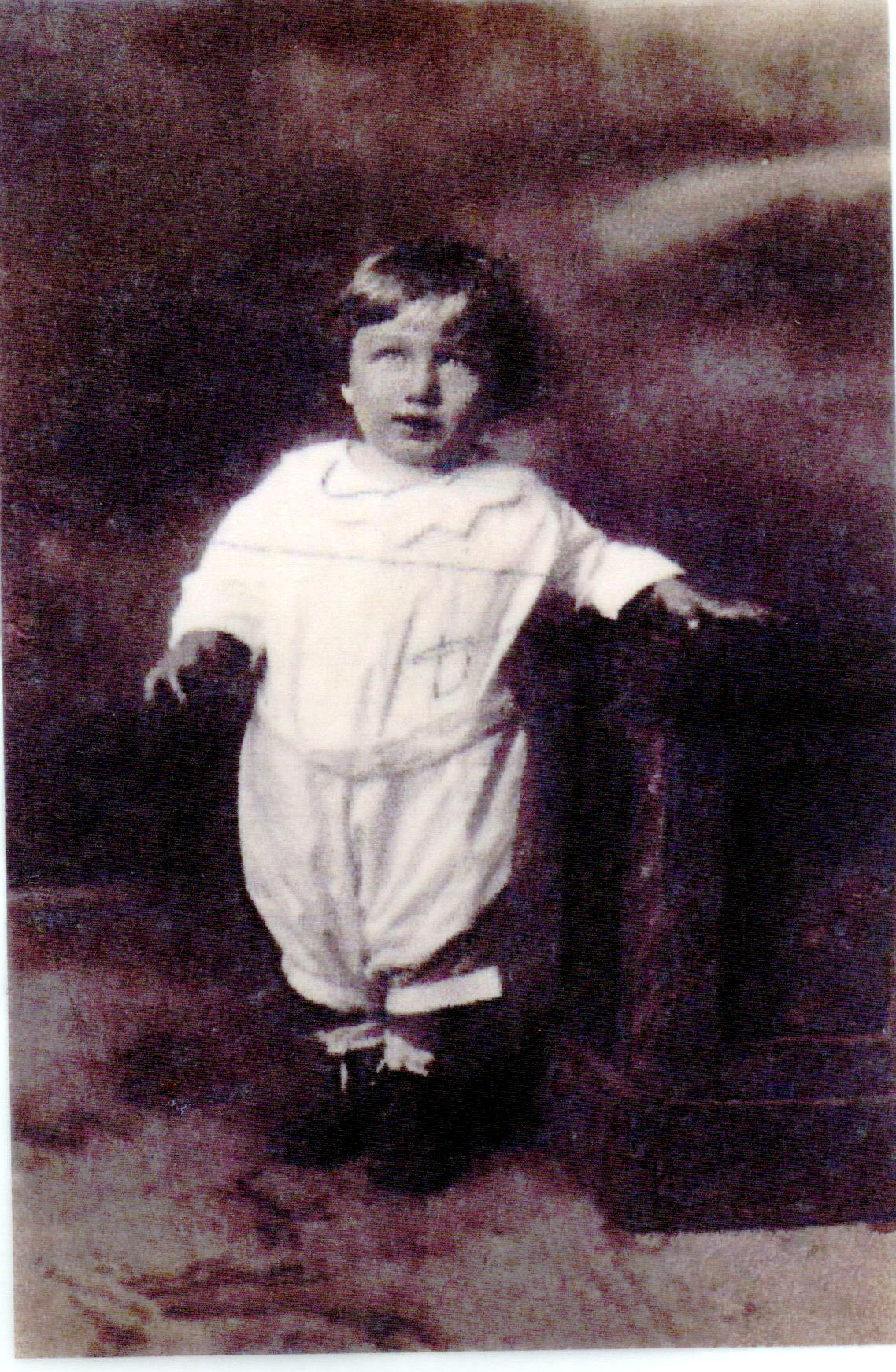  |
(Return to top)

Click the ad above to go to the "I'm there for you baby" website
|
'Racist' label simply does not fit Pete Wilson
SAN DIEGO—Yesterday, on private property in the Horton Plaza area of downtown, a statue of San Diego's former mayor Pete Wilson was dedicated by Wilson himself, who had gone from City Hall to the United States Senate and later to the governorship of California before retiring in Los Angeles.
It was the record that he compiled as governor—particularly his backing for a measure that would have denied social services to immigrants in the state illegally—that brought out a crowd of protesters who shouted from across the street that Wilson was a racist.
The Wilson-backed Proposition 187, had the court not invalidated the 1994 initiative measure, may have had a racist effect, because its burden fell disproportionately on one group of people, Mexican-Americans, who forever would have suffered under the suspicion that perhaps they were not "real" Americans. The thought of it still makes me shudder, reminiscent as it was of the United States shutting Japanese-Americans into camps during World War II for no other reason than they were the same ancestry as the people who had attacked Pearl Harbor.
The immigration issue is too complex for simple answers—much to the frustration of the demagogues, who Wilson unfortunately tried to please, recognizing he needed to shore up his conservative credentials if ever he wanted to win the favor of a national party that considered him a liberal. For students in history classes, 1846 seems like a long, long time ago—but in fact the year of the Treaty of Guadalupe-Hidalgo, by which Mexico surrendered California and much of the Southwest to the United States, by historical standards is a short time ago. It left on both sides of the border Spanish-speaking families whose descendants to this day feel kinship to each other. Why should quotas have restricted Mexican immigration to this part of the country, which was theirs in the first place, while encouraging immigration from northern European countries? Of all people, we Jews know how discriminatory and, yes, racist, America's immigration policies were.
But to get back to Wilson, I don't believe he personally is a racist. I think he is the kind of person who measures another person by his or her accomplishments, demeanor and potential and not by a standard so shallow as skin-color, ethnic background, nor religion. Some protestors also shouted that he was anti-gay, but in the many years that Wilson was in office, I don't remember that issue coming to the fore.
Our community has seen, from long experience, that "white racists" have a tendency to be virulent anti-Semites. Racism and anti-Semitism go together like death and maggots. There probably has been no public official who was a better friend to the Jewish community—and to Israel—than Pete Wilson. He embraced our community with an open-armed "Shalom" and if you don't believe me, ask longtime columnist and Jewish community leader Gert Thaler of San Diego. She can attest not only to his love for Israel but to the many times, regardless of the office he held, that he allied himself with our community.
Personally, I am a lot happier to walk by the statue of Pete Wilson than I am to drive past the large mural of Charles Lindbergh at Lindbergh Field, or to see his statue as a boy and a man near Terminal Two. Notwithstanding Lindbergh's hero status as the first person to fly solo across the Atlantic Ocean, I think he is undeserving of the honors because he was so closely associated with urging American support for the Nazi regime of Adolf Hitler. Anyone who supported Hitler directly or indirectly helped bring about the Holocaust, and simply doesn't deserve to be honored.
For some time now, the Louis Rose Society for the Preservation of Jewish History has been raising funds for a statue of San Diego's first Jewish settler, who came here in 1850 and within a few years became a leader of the city as chairman of the City Board of Trustees (functionally equivalent to mayor) and as a member of the first County Board of Supervisors. Rose preached that San Diego's future meant moving its business district from Old Town to the bay, and in hopes of furthering that dream laid out Roseville, which today is a portion of Point Loma.
In recognition of that contribution the city Parks and Recreation Department created Louis Rose Point at the foot of Womble Road in the old Naval Training Center area, today called Liberty Station. If anyone would like to get behind the erection of a statue to the Jewish pioneer, please send a contribution to the Jewish Community Foundation/ Louis Rose Fund, 4950 Murphy Canyon Road, San Diego, Ca 92123. Statues cost many thousands of dollars to build, so your generosity will be most welcomed.
Louis Rose, I trust, is someone who Pete Wilson's supporters and detractors could agree deserves honoring!
(Return to top)
Kinsler has own record in Rangers' 30-run game
By Joe Naiman
SAN DIEGO—Jewish ballplayers have not only had prominent careers but also spectacular games which earned spots in the baseball record books. The no-hitters of Sandy Koufax and Ken Holtzman come to mind, as does Holtzman hitting a
World Series home run as a pitcher. Phil Weintraub's 11 runs batted in during a 1944 game didn't tie or set a single-game record, but it still ranks as one of the top statistics in baseball's history. Shawn Green's 2002 game in which he set a single-game record with 19 total bases and tied the nine-inning mark with four home runs also ranks as one of the spectacular one-game performances by a Jewish ballplayer.
 The list of Jewish ballplayers with a prominent game grew on August 22 as part of the Texas Rangers' 30-3 win over the Baltimore Orioles. The score set a modern (post-1900) record for most runs by one team in a game, and since the game was part of a doubleheader and the Rangers scored nine more runs in the nightcap the 39 runs is a new mark for a doubleheader. The list of Jewish ballplayers with a prominent game grew on August 22 as part of the Texas Rangers' 30-3 win over the Baltimore Orioles. The score set a modern (post-1900) record for most runs by one team in a game, and since the game was part of a doubleheader and the Rangers scored nine more runs in the nightcap the 39 runs is a new mark for a doubleheader.
Ian Kinsler
The Rangers' lineup included second baseman Ian Kinsler, previously mostly a Jews in Baseball name but now one of a select few batters in the history of the majors to accumulate eight plate appearances in a
game.
Kinsler's box score included three hits in seven at-bats. He scored three of the Rangers' runs and drove in two. In addition to his three singles, he also drew a walk. In nine
innings he came to the plate eight times.
Since there are 27 outs for each team in a nine-inning baseball game, and three fewer than that if the home team is ahead after the top of the ninth, very few players have
stepped up to the plate eight different times in a single game. In order for a batter on a visiting team (the game was played in Baltimore) to have six plate appearances in a
game, the team's total of runs scored and runners left on base must be at least 19. The total number of runs and runners left aboard must be at least 28 for a batter to
have seven plate appearances in a game, and in order for a batter to go to the plate eight times in the same game a team must have at least 37 runners who crossed the plateor died on base. Since Kinsler batted second in the Rangers' lineup in the 30-3 win, his feat required at least 30 runs and stranded runners, and Rangers leadoff batter Frank Catalanotto also accomplished the feat which also requires the batter to remain in the game for the duration.
Catalanotto and Kinsler became the eighth and ninth players since 1900 to have eight plate appearances in a game,and the August 22 contest was only the sixth game since 1900in which at least one batter had eight plate appearances. When games between 1876 and 1899 are included, the list swells to 27 batters, including Catalanotto and Kinsler, in 15 different games.
For the record, Kinsler was hitless in three at-bats in the doubleheader nightcap but walked twice, giving him 13 plate appearances for the doubleheader. It was quite
a busy day for the Jewish second baseman, and one which put him individually in the record books as well as making him part of a record-setting team.
With his eight plate appearances, Ian Kinsler has been elevated from Jews in Baseball to Jews in the baseball record book.

{Marc Kligman, who combines being a sports agent with his life as an observant Jew, invites you to listen. Click on the ad above for more information}
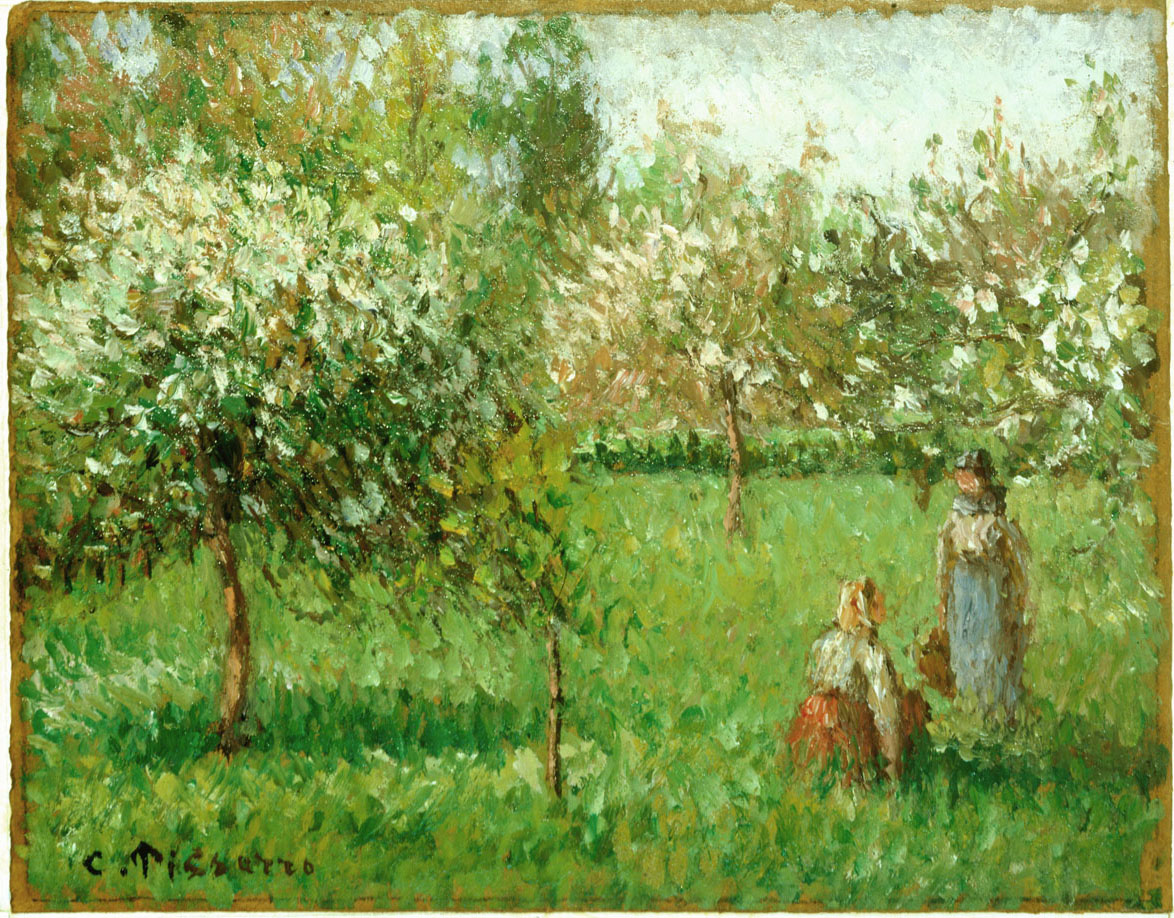
IMAGES FROM CAMILLE PISSARRO: IMPRESSIONS OF CITY AND COUNTRY, September 16,
2007 – February 3, 2008: Camille Pissarro, Apple Trees in Bloom, Éragny, c. 1900, oil on panel.
John C. Whitehead Collection, Courtesy of Achim Moeller Fine Art, New York.
New York's Jewish Museum to offer important
exhibit on the impressionism of Pissarro Sept. 16
NEW YORK, NY (Press Release) – A founding member of the Impressionists and a master of depicting urban life and rural settings, Camille Pissarro (1830-1903) was the only artist to show his paintings in all eight of the Impressionist exhibitions from 1874 to 1886, and the only Impressionist who was Jewish.
Pissarro is celebrated for his Impressionist landscapes painted in and around the villages of the French countryside surrounding Paris. He also painted more cityscapes than any other Impressionist artist. Pissarro’s continual artistic experimentation revolutionized late-19th-century art. The artist espoused an anti-bourgeois, anarchist ideology and was passionate about the plight of the working classes.
The Jewish Museum will present Camille Pissarro: Impressions of City and Country from September 16, 2007 through February 3, 2008. This exhibition includes nearly 50 paintings and works on paper – drawn primarily from New York City-area private collections – many of which have rarely been on public view. Camille Pissarro: Impressions of City and Country examines how the painter’s artistic theories and social convictions influenced his Impressionist and Neo-Impressionist work.
Throughout his long career, Pissarro lived and worked in various villages in the French countryside, spent much time in Paris, and traveled to England, Belgium, and the Netherlands. Pissarro’s travels and his constant artistic experimentation reflect his ceaseless desire to seek out new motifs and explore new ideas in paint. Although he himself never voyaged to the United States, Pissarro’s works were exhibited in New York City as early as 1883, and American collectors began buying his works during the artist’s lifetime. Today, some of the greatest Pissarro paintings are in American collections, with a large number in public and private collections in the New York City area.
Visitors to the exhibition will be able to see works spanning Pissarro’s career from his arrival in Paris in 1855 with subjects from his Caribbean homeland, to scenes of peasants working in the French countryside, and later works depicting Parisian bridges and boulevards. The Impressionist and Neo-Impressionist landscapes and cityscapes presented in Camille Pissarro: Impressions of City and Country, reveal the artist’s innovative techniques, his determined individualism, and the links between his artistic and political ideas.
Born in 1830 on the Caribbean island of St. Thomas, then part of the Danish Virgin Islands, Pissarro was raised in a Sephardic Jewish family from Bordeaux, France. He grew up in a bourgeois household and was sent to Paris at the age of twelve for a formal education and artistic training. Upon his return to St. Thomas six years later, he was expected to work in the family mercantile business but, in an act of defiance, left to paint, first in Venezuela, and then to the center of the nineteenth century art world, Paris.
After his arrival in Paris in 1855, Pissarro studied with the renowned Barbizon landscapist Jean-Baptiste-Camille Corot and became influenced by the gritty realism of Gustave Courbet. He soon sought to escape the social and political pressures of Parisian life, including the art establishment embodied by the official Salon. By the 1860s, Pissarro and other modern painters began to explore the regions around Paris made newly accessible by railway.
Artists including Pissarro, Paul Cézanne, Claude Monet, Pierre-Auguste Renoir, and Alfred Sisley retreated to the rural villages and farms to paint outdoors, finding motifs in modern everyday life rather than in the historical and mythological subject matter favored by their predecessors and the judges of the official Salon, the annual juried exhibition that defined which artists gained recognition and became successful. Their early experimentations in light and color would eventually be associated with Impressionism. Pissarro was also interested in the utopian ideal of living and working in accord with nature. For Pissarro, the country was a means to commune with the rural working class, at least on canvas, and to escape the conventions of city living.
In the early 1870s, a group of artists and writers met frequently at the Café Guerbois in Paris to discuss painting and politics. Tired of having their work judged and often rejected, Pissarro and Monet, joined by Renoir, Sisley, Edgar Degas and Berthe Morisot, among others, decided to form a group of artists completely independent of the Salon. On April 15, 1874, the first Impressionist exhibition, as it came to be known, opened.
Pissarro and the other Impressionists took an avant-garde approach, using visible strokes of paint applied with brush and palette knife, foregoing detail, and leaving paint unmixed so as to create an optical blending of colors. At the time, the unconventional techniques they pursued were considered revolutionary, and provoked the harsh rebuke of the public and critics.
Pissarro’s artistic methodology is linked to his ideological outlook. This centered around a retreat from the authority of government and the artistic establishment, as well as a belief in an egalitarian society, influenced by anarchist literature. He based his approach to art on two concepts mentioned frequently in his correspondence: “nature” and “sensation.” While stressing the importance of studying nature and faithfully representing the visual world, his concept of nature in art is mediated by sensations – those feelings, perceptions, and memories that are personal, subjective and continuously shifting.
Pissarro’s painting process was closely tied to his leftist leanings, which were embodied in the radicalism of the Impressionist technique. His anarchism and painting technique became even more radical in the mid-1880s when he became associated with the Neo-Impressionists – Georges Seurat and Paul Signac – and their pointillist style. As with Impressionism a decade earlier, Neo-Impressionism provoked the disdain of critics and dealers, and Pissarro’s Neo-Impressionist works did not sell well during his lifetime.
After several years of working in the Neo-Impressionist style, Pissarro felt that the labor-intensive process of the pointillist technique took him away from the sensations that had previously animated his work. While he returned to his Impressionist style, his subject matter took a turn towards urban themes. In his later years, Pissarro spent a great deal of time in Paris, as well as in London and Rouen, and devoted himself mostly to city scenes. Pissarro painted more than three hundred such subjects, often in series, becoming the foremost Impressionist painter of cityscapes.
Pissarro was deeply affected by the growing unrest and anti-Semitism that had gripped Paris at the end of the nineteenth century during the time of the Dreyfus Affair. Although the French Jewish army officer Alfred Dreyfus had been convicted of espionage several years earlier, it was not until the late 1890s that the public became aware that the evidence used to convict him was false and based on anti-Semitic assumptions. Public opinion was fiercely divided, as were the attitudes of the Impressionist artists.
While Pissarro, Claude Monet, and Mary Cassatt aligned themselves with the Dreyfusards, Paul Cézanne, Pierre-Auguste Renoir, and Edgar Degas supported the French government and even made anti-Semitic comments against Pissarro, their former friend and colleague. However, as was characteristic of his work, Pissarro’s paintings from this volatile time avoid references to current events while exploring the relationship between humanity and its environment, whether social, political, or natural.
Camille Pissarro followed his own path, never giving way to convention and always moving toward an individualistic aesthetic. Throughout his life, he remained an artist sustained by, as he wrote, the “satisfaction of living by my ideas.”
The exhibition has been organized by Karen Levitov, Associate Curator at The Jewish Museum. In conjunction with the exhibition, The Jewish Museum is publishing a 96-page catalogue by Karen Levitov and Richard Shiff, which is being distributed by Yale University Press. Dr. Shiff holds the Effie Marie Cain Regents Chair in Art and directs the Center for the Study of Modernism at the University of Texas in Austin. The paperback book features 76 color illustrations and sells for $19.95 at The Jewish Museum’s Cooper Shop and bookstores everywhere.
Camille Pissarro: Impressions of City and Country is sponsored, in part, by Toll Brothers, Inc., and The Grand Marnier Foundation. Important support was also provided by The Mailman Foundation, Inc. and other generous donors.
The preceding story was provided by the Jewish Museum of New York
(Return to top)
|

 "As
I expected, the role is both challenging and fun. I
missed serving in an operational command position of
this kind." The fact that this is the biggest brigade in
the IDF poses a challenge to Virov, although he says
"the number of missions and the fight for our home" are
equally challenging. "Being a commander of any brigade
in the army, especially the Kfir Brigade is the greatest
honor and achievement anyone could ask for. I truly see
the role of commander as my personal duty and mission."
"As
I expected, the role is both challenging and fun. I
missed serving in an operational command position of
this kind." The fact that this is the biggest brigade in
the IDF poses a challenge to Virov, although he says
"the number of missions and the fight for our home" are
equally challenging. "Being a commander of any brigade
in the army, especially the Kfir Brigade is the greatest
honor and achievement anyone could ask for. I truly see
the role of commander as my personal duty and mission."


 It
focuses on the 100-year history of the
museum’s library and celebrates the
important personalities who helped to
shape it – from its inception through to
its most recent projects. The curator
Michal Bušek says that “this show is the
first detailed look at the history of
the Jewish Museum in Prague’s library,
which is now a fully functional and
modern institution not only with a
comprehensive collection of Judaica and
Hebraica from Bohemia.On display for the
first time are archive records on the
library’s history, period photographs
and profiles on Tobias Jakobovits and
Otto Muneles. Visitors can also find out
about the Library of the Prague Jewish
Religious Community and the Central
Library in Terezín.”
It
focuses on the 100-year history of the
museum’s library and celebrates the
important personalities who helped to
shape it – from its inception through to
its most recent projects. The curator
Michal Bušek says that “this show is the
first detailed look at the history of
the Jewish Museum in Prague’s library,
which is now a fully functional and
modern institution not only with a
comprehensive collection of Judaica and
Hebraica from Bohemia.On display for the
first time are archive records on the
library’s history, period photographs
and profiles on Tobias Jakobovits and
Otto Muneles. Visitors can also find out
about the Library of the Prague Jewish
Religious Community and the Central
Library in Terezín.” 

 As
Spertus
Institute’s
Chief
Financial
Officer,
Swacha will
be
responsible
for overall
financial
strategy, as
well as
accounting
and budget
preparation,
for the
nationally
renowned,
Chicago-based
Jewish
educational
and cultural
institution.
She
previously
served as
the Audit
Manager for
McGladrey
and Pullen,
LLC.
(formerly
Alschuler,
Melvoin and
Glasser LLP)
where she
developed a
specialty in
financial
management
for
academic,
cultural,
and other
nonprofit
organizations
and
foundations.
Swacha
received a
Master of
Accountancy
from DePaul
University,
from which
she
graduated
with
distinction,
and a
Bachelor of
Business
Administration
in
Accountancy
from Loyola
University,
from which
she
graduated
Summa Cum
Laude. She
is a member
of the
American
Institute of
Certified
Public
Accountants
and the
Illinois CPA
Society.
Swacha is
married with
two young
sons and
resides in
suburban
Roselle.
As
Spertus
Institute’s
Chief
Financial
Officer,
Swacha will
be
responsible
for overall
financial
strategy, as
well as
accounting
and budget
preparation,
for the
nationally
renowned,
Chicago-based
Jewish
educational
and cultural
institution.
She
previously
served as
the Audit
Manager for
McGladrey
and Pullen,
LLC.
(formerly
Alschuler,
Melvoin and
Glasser LLP)
where she
developed a
specialty in
financial
management
for
academic,
cultural,
and other
nonprofit
organizations
and
foundations.
Swacha
received a
Master of
Accountancy
from DePaul
University,
from which
she
graduated
with
distinction,
and a
Bachelor of
Business
Administration
in
Accountancy
from Loyola
University,
from which
she
graduated
Summa Cum
Laude. She
is a member
of the
American
Institute of
Certified
Public
Accountants
and the
Illinois CPA
Society.
Swacha is
married with
two young
sons and
resides in
suburban
Roselle.







 ●Louisville
Mayor
Jerry Abramson
has announced a 30-block redevelopment project in
concert with the University of Louisville and the State
of Kentucky. Expected to cost $2.5 billion over
the next two decades, the redevelopment is expected to
generate high skilled, high paying jobs in the health
care sector.
●Louisville
Mayor
Jerry Abramson
has announced a 30-block redevelopment project in
concert with the University of Louisville and the State
of Kentucky. Expected to cost $2.5 billion over
the next two decades, the redevelopment is expected to
generate high skilled, high paying jobs in the health
care sector. ●New
York City Mayor
Michael Bloomberg
has broken ground on an
●New
York City Mayor
Michael Bloomberg
has broken ground on an
 ●U.S.
Rep.
●U.S.
Rep. 
 ●
Announcing the reshuffling of subcommittee assignments
for the Senate Armed Services Committee earlier this
month, the chairman, Senator Carl Levin
(Democrat, Michigan), assigned Senator Joseph
Lieberman (Independent, Connecticut) as
●
Announcing the reshuffling of subcommittee assignments
for the Senate Armed Services Committee earlier this
month, the chairman, Senator Carl Levin
(Democrat, Michigan), assigned Senator Joseph
Lieberman (Independent, Connecticut) as ●Pennsylvania
Gov. Edward Rendell recently held a signing
ceremony for a bill expanding his state's commitment to
solar energy at a school in Erie, Pennsylvania, where a
new solar system is being installed. "
●Pennsylvania
Gov. Edward Rendell recently held a signing
ceremony for a bill expanding his state's commitment to
solar energy at a school in Erie, Pennsylvania, where a
new solar system is being installed. "
 ●
New York Governor Eliot Spitzer recently
signed legislation enabling rape victims to obtain quick
information about whether the assailant tested positive
for HIV/AIDS. Previously victims could only
●
New York Governor Eliot Spitzer recently
signed legislation enabling rape victims to obtain quick
information about whether the assailant tested positive
for HIV/AIDS. Previously victims could only


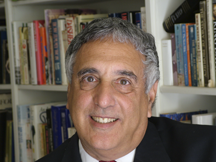 The
Jewish
Citizen
The
Jewish
Citizen
 The list of Jewish ballplayers with a prominent game grew on August 22 as part of the Texas Rangers' 30-3 win over the Baltimore Orioles. The score set a modern (post-1900) record for most runs by one team in a game, and since the game was part of a doubleheader and the Rangers scored nine more runs in the nightcap the 39 runs is a new mark for a doubleheader.
The list of Jewish ballplayers with a prominent game grew on August 22 as part of the Texas Rangers' 30-3 win over the Baltimore Orioles. The score set a modern (post-1900) record for most runs by one team in a game, and since the game was part of a doubleheader and the Rangers scored nine more runs in the nightcap the 39 runs is a new mark for a doubleheader.
